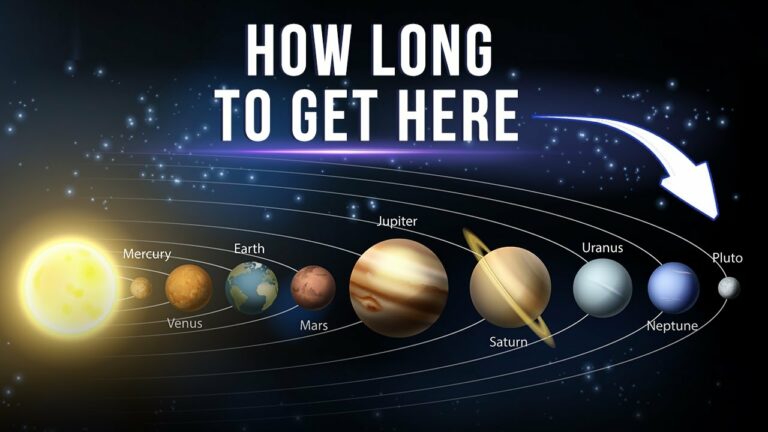How Long Does It Take To Get To Our Solar System Planets?
Those unfamiliar with orbital calculations might think that the best way to reach a planet from Earth is to wait until it is as close as possible, and then point the rocket in its direction and take off.
But no…This method would not work for several reasons.
The most obvious is that the planets, including Earth, are not motionless in space, but move in almost circular orbits at speeds of tens of kilometers per second.
Therefore, instead of “aim and shot,” it is necessary to put the spacecraft on an elliptical orbit (called a Hohmann transfer orbit) that connects Earth to where the planet will be by the time the spacecraft reaches the planet’s orbit.
These we have just laid out are the general principles of interplanetary navigation, but what if we went and found out the times, velocities and trajectories used to get to each of the planets in the solar system?
1 – Neptune. Distance from the Sun: 4500 million kilometers, minimum distance from Earth: 4347 million kilometers
2 – Uranus. Distance from the Sun: 2870 million kilometers, minimum distance from Earth: 2720 million kilometers
3 – Saturn. Distance from the Sun: 1427 million kilometers, minimum distance from Earth: 1277 million kilometers
4 – Jupiter. Distance from the Sun: 778 million kilometers, minimum distance from Earth: 620 million kilometers
5 – Mars. Distance from the Sun: 228 million kilometers, minimum distance from Earth: 56 million kilometers
6 – Venus. Distance from the Sun: 128 million kilometers, minimum distance from Earth: 41 million kilometers
7 – Mercury. Distance from the sun: 58 million kilometers. Minimum distance from Earth: 91 million kilometers.
Do not forget to share your opinion with us to provide you with the best posts !




0 Comments